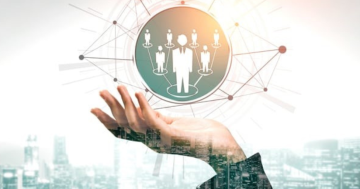Rajesh Rai* says diversity and inclusion are behaviours, they can be mostly measured through policy and procedures, however, belongingness is an emotional response that covers an array of factors such as an individual’s trust, comfortability, and openness towards the company.
 I have always wondered – ‘what compels people to quit if organisations drive various employee-centric strategies and initiatives designed for their people?’.
I have always wondered – ‘what compels people to quit if organisations drive various employee-centric strategies and initiatives designed for their people?’.
I have often delved deeper into what makes an employee truly engaged with the company.
Upon drowning myself time and again in these thoughts, my mind has many a time given me several immediate responses such as culture, manager, organisational values, recognition, and much more, yet leaving a bit of space for something more to be decoded to unlock this mystery.
I guess it was easier when I asked myself this question – what makes me stick where I am? Immediately I came to the counter-questions – ‘do you experience the glue to the place?’ and ‘do you truly belong here?’.
The word ‘belong’ resonated loud, clear, and deeply, and it had to be decoded.
‘What is belongingness?’, ‘how does belongingness apply to me?’, and therefore, ‘how will belongingness apply to employees?’ These have been a few questions in my mind, but no easy answers to them!
I went back to basics and read a lot about what ‘belongingness’ may mean.
The first concept to touch upon was diversity, equity, and inclusion (DEI).
A Gartner’s research shows that organisations with sustainable DEI initiatives demonstrate a 20 per cent increase in inclusion, which corresponds to greater on-the-job effort and intent to stay, as well as high employee performance.
It further says that belonging is a key component of inclusion.
Genuine inclusion of employees can lead to the perception that the organisation truly cares for them as unique individuals, with their authentic selves being valued.
This is a great insight for sure!
The 2022 McKinsey Great Attrition Survey found that more than half of the employees who left their jobs in the last six months reported not feeling appreciated by their organisation (54 per cent) or manager (52 per cent), or not experiencing a sense of belonging (51 per cent).
Moreover, 46 per cent stated their desire to work with people who have trust and care for each other as a reason for leaving their jobs.
In essence, employees crave deeper connections, a sense of community, and to be acknowledged.
Again, another super insight!
Understanding belongingness
These insights provoked the idea of scaling DEI&B efforts.
But then how do we measure belongingness? Is it the same as the DE&I measurement? Here is where ‘phoebe insights’ came to the rescue for me.
Measuring belongingness is different than simply measuring diversity and inclusion.
Diversity and inclusion are behaviours, meaning they can be mostly measured through policy and procedures.
On the other hand, belongingness is an emotional response that covers an array of factors such as an individual’s trust, comfortability, and openness towards the company.
Therefore, belongingness happens when the employee is ‘valued’, and value here means not only are they acknowledged and appreciated for their work, but they also understand how their work contributes to the company’s vision, mission, key priorities, and growth.
It also means that ‘they matter’ – being part of the teams, on ‘top of mind’ for leading and driving the initiatives, being ‘trusted’ and ‘cared for’, and that is the ultimate cement that joins them to the culture of the company.
Belongingness is in these little things that define “moments that matter” – let’s explain that in greater detail with questions that come to an employee’s mind when they experience an organization.
Was I welcomed in the organisation when I joined?; were my manager and my team supportive enough to help me settle?; was I appreciated for the perspective I brought into discussions?
Then, was I given more responsibility to help me learn and grow; did someone think of investing in me with a bigger role or special project; was I recognised and rewarded for the work I did; was I supported when I failed? Moreover, did my manager and co-workers lend a supporting hand when I needed it most; was I proactively considered for succession and promotion, did anyone think of coaching me to grow; am I respected for what I bring?
The list can be long but all these questions define value and thus, belongingness that the employee feels in them.
It is belongingness that leads to engagement and ultimately retention.
Ultimately all employees need an anchor and belongingness needs an emotional anchor, which can be provided through all of the numerous ideas l have mentioned.
In today’s disruptive times, another element of belongingness that has become very relevant is how the employee’s family and well-being are taken care of by the workplace.
Is the workplace providing the support an employee’s family may need at a critical juncture? (We have had so many of these critical junctures in the last three years!); Is the workplace supportive enough to provide help and assistance towards holistic mental, social, and financial well-being, and is the workplace helping build social capital in these times of distress caused by the pandemic, the socio-economic, and industry climate?
So deep is the concept of belongingness, but a clear start is inclusion.
An inclusive culture, where everyone is valued for being themselves, starts a culture of equity and diversity.
Belongingness stems from here thereafter.
Fostering belongingness in the workplace
There are certain actions organisations must take to promote belongingness, and the proof of the pudding lies in how the employee experiences the workplace every day and if that truly helps them ‘belong’.
- Make all employees learn, adopt, and apply inclusion as a first step. Bring the dialogue forward on what makes the culture inclusive and provide for experiential sharing through examples of what an inclusive culture in action means.
- Be inclusive when it comes to meetings, collaboration opportunities, and decision-making. Encourage your managers to involve their teams in important decisions that affect the department.
- Promote the concept of role models so that employees feel seen, supported, and connected. Make sure your role models represent a range of employee groups so that employees can identify with them.
- Be mindful of not losing out on ‘moments that matter’ in any employee’s life.
- Build diverse teams and embody your organisation’s values of inclusivity at every level of the company.
- Be transparent and connect with your employees regularly. Use surveys to ask them for feedback. Make sure your managers hold regular one-on-one sessions with each individual on their teams. Encourage employees to voice concerns when they crop up.
- Make sure your managers are responsive, appreciative, supportive, and empowering. They are the backbone of the organisation’s culture as they have the most direct contact with the employees.
- Every conduct counts – make everyone accountable for conduct and adherence to the core values of the company, in the absence of which, belongingness is a farfetched idea
- Identify the emotional anchors of employees, so that those can be brought to the culture of the place right up front.
- People teams can extend support by training managers, and working with employees through empathy, compassion, and most importantly, approachability. The people function is the harbinger of compassionate change.
- Lastly, measure belongingness through engagement scores and retention rates. Who is leaving or is not engaged can mostly be identified in any of the above factors not working as the root cause.
There is something personal about creating belongingness, and when that ‘something personal’ doesn’t click, things crack up and dissonance creeps in.
It is an organisation’s job (everyone and not necessarily only HR or business) to identify these personalised anchors of belongingness for employees and have them in place for prime performance and engagement.
Belongingness is very deep and evolved inclusion, diversity, and equity in action and the supercritical secret towards engaged employees and a productive, happy workforce!
*Rajesh Rai is the Vice President – People Team and Head of Human Resources, India at GlobalLogic.
This article first appeared at peoplematters.in











